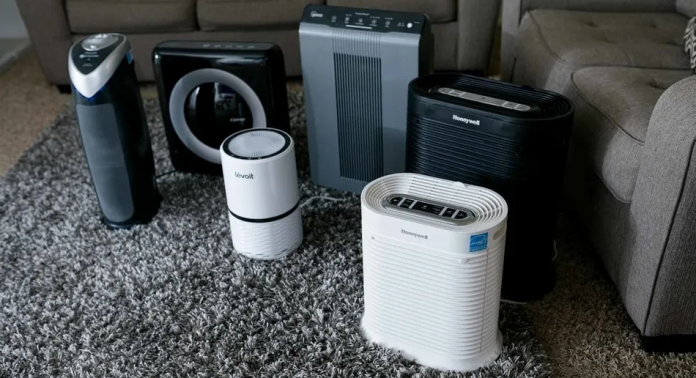Air purifiers come in a variety of forms, dimensions, and colors. What is more crucial to note is that not all air purifiers function the same way. In truth, different purifiers use various methods to filter the air you inhale. The most prevalent types are listed below.
HEPA Purifier
HEPA stands for High-Efficiency Particulate Air, and it is a particle filtering technology that has been utilized for many years. HEPA filters must capture at least 99.97 percent of all particles larger than 0.3 microns. Because the human eye only sees particles larger than 10 microns in size, particles trapped in a HEPA filter such as chemicals and pathogens are invisible. Since HEPA filters may catch mold and germs, they help to maintain a more hygienic environment. Furthermore, this sort of air purifier produces no ozone or other dangerous byproducts.
HEPA air purifiers are the best at catching airborne particles, but they do not remove smells, chemicals, or fumes. As a result, most of them contain some activated carbon-based material to absorb odors and chemicals that the HEPA filter does not capture.
Carbon Activated Tech
Activated carbon is a type of carbon that has been treated to make it exceptionally porous with a large surface area for absorbing particles. Activated charcoal has been used since the early 1900s when it was sold commercially to cleanse water and remove the color from sugar. It was discovered during WWI that it could be used in gas covers to defend soldiers as well as for wartime water and air purification.
Activated charcoal filters are made up of several molecularly sized pores with excellent absorbency and chemical bonding. These characteristics are an extremely effective technique for catching pollutants such as chemical discharges, vapors, tobacco smoke, and smells. Once caught, these pollutants are not discharged back into the atmosphere, preventing recontamination.
Carbon air filters help lower air pollution in rooms, but they have a lower efficiency level in filtering allergens and aerial particles. They also have limits on eliminating toxins that are too far away to be driven through filters.
UV Technology
Since UV technology can’t effectively remove airborne particles, it is typically used in combination with particulate filter systems. However, it is a good way to kill pathogens such as bacteria and viruses. This technology employs a UV lamp, and as microorganisms travel through the UV rays emitted by the floor lamp, they are subjected to cellular or genetic damage, resulting in their destruction.
While UV technology is good at destroying bacteria and viruses, it is best utilized in conjunction with a filter system before the lamps. Too many microbes are veiled from the light by particles in the absence of a filter system. As a result, most UV purifiers begin by filtering the air with a combination of HEPA and activated carbon before adding UV as a final filtration phase.
Negative Ions
In order to purify the air, negative ion purifiers employ chemical injections. An ion is a naturally occurring particle with a positive or negative charge. They obtain this charge by receiving or losing an electron. Negative ions are basically oxygen atoms with an extra electron. They capture aerosols such as dust and pollen magnetically until the newly created particle is too heavy to remain suspended in the air. As a result, the particle falls and attaches itself to another solid object in the room, such as windows or walls.
It is vital to understand how each of these technologies works so that you can select the best air purifiers for your unique needs.










